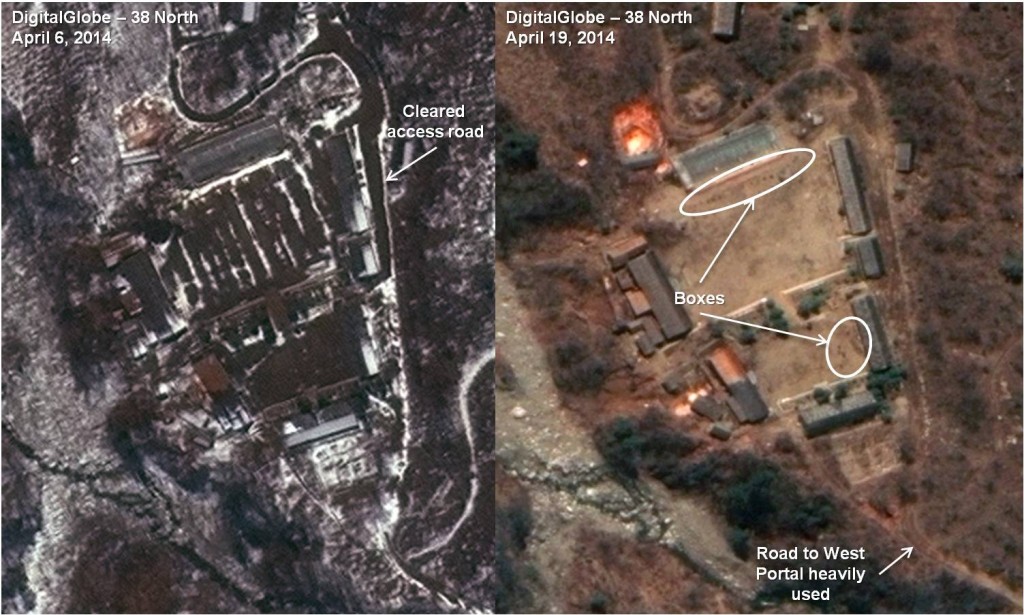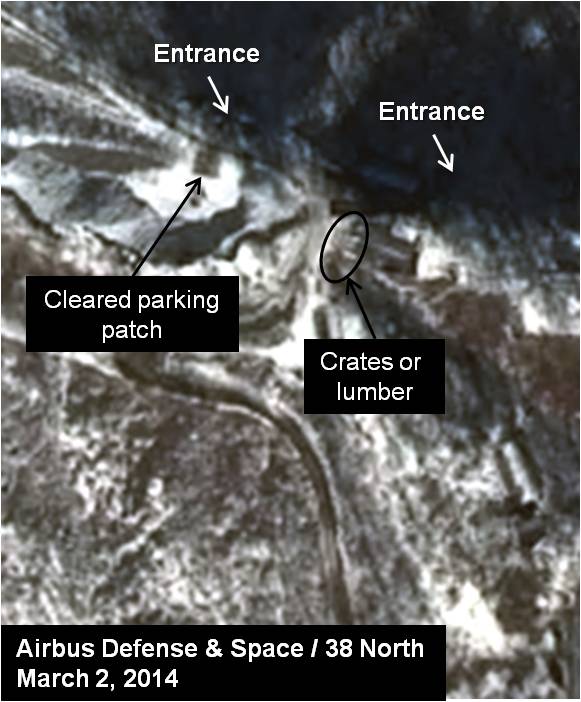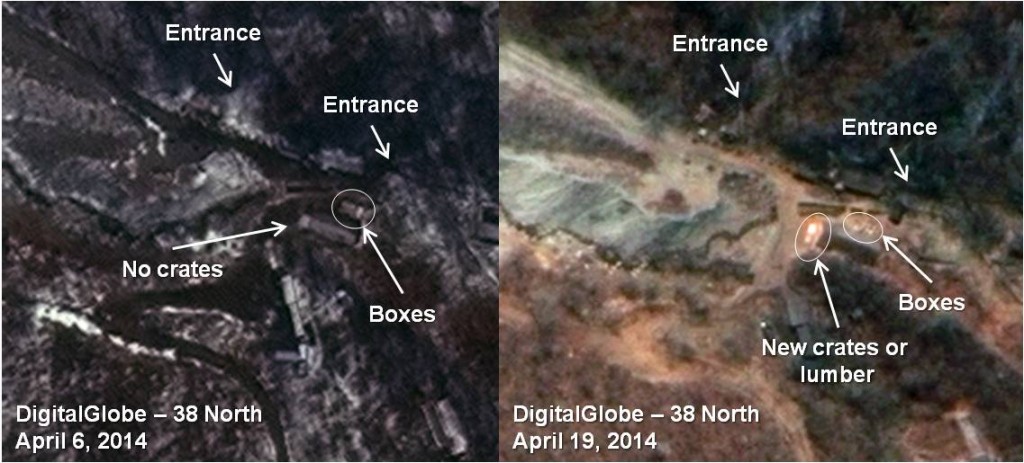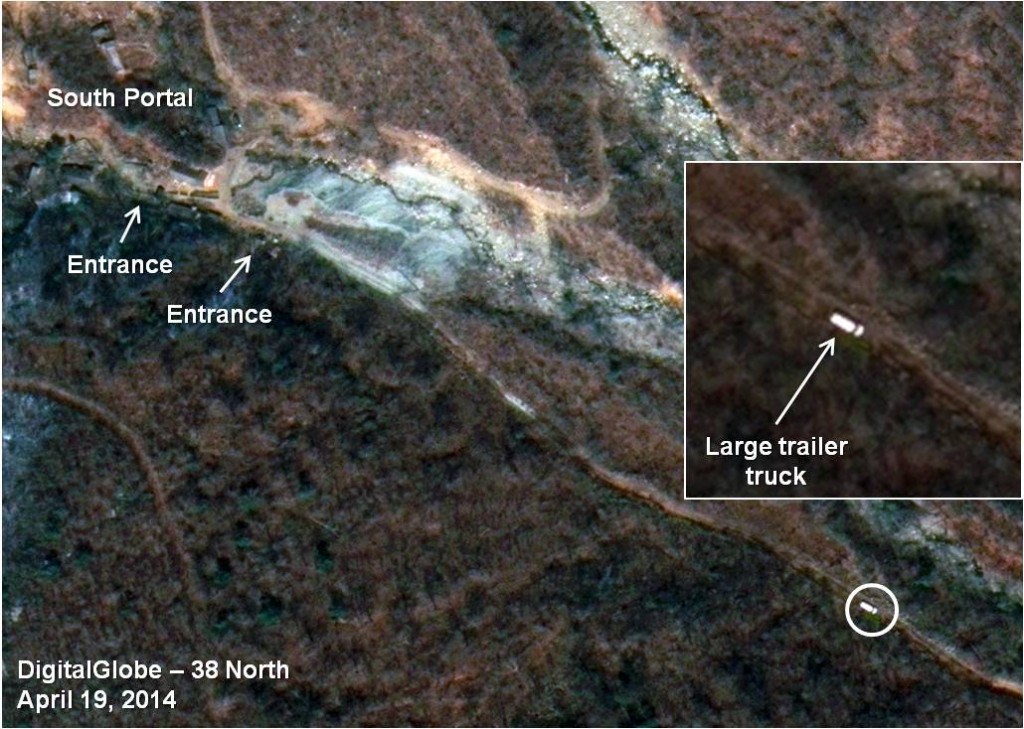New Developments at North Korea’s Punggye-ri Nuclear Test Site
Summary
Recent commercial satellite imagery indicates that Pyongyang has begun new operations at the Punggye-ri Nuclear Test Site. In the six-week period from early March 2014 until April 19, imagery shows an increase in activities at the Main Support Area. This area was used to manage operations and handle personnel and equipment during preparations at the West Portal area for the February 2013 nuclear detonation as well as at the South Portal area, where there are two completed tunnels. In particular, there appears to be movement of crates, boxes and materials near the entrances, possibly into the tunnels.
Recent press speculation has focused on the possibility of a nuclear detonation during US President Barack Obama’s upcoming visit to Seoul on April 24-25. That may be possible but appears unlikely based on the limited commercial satellite imagery available and observations of past North Korean nuclear tests. Recent operations at Punggye-ri have not reached the high level of intensity—in terms of vehicle, personnel and equipment movement—that occurred in the weeks prior to past detonations. Moreover, other possible indicators present before the North Korean nuclear tests in 2009 and 2013, such as communications vans and a satellite dish intended to transmit pre-test data, have not been spotted.
New Low Levels of Activity at the Main Support Area
Recent commercial satellite imagery indicates an uptick in activities at the Main Support Area, which played an important role in managing operations as well as handling personnel and equipment necessary for conducting the February 2013 test in the West Portal area. The area would presumably play a similar role in case of a test at one of the completed tunnels in the South Portal area.
While the access road has been kept clear of snow, there are no discernible vehicle tracks in either parade area. (During the 2-3 months leading to the 2013 test, vehicles, their tracks and personnel movements were very apparent in imagery.) By April 16, in addition to snow clearing, boxes (for what purpose is unclear) are now visible in the parade areas. This activity falls short of what has been observed in the past before North Korea has conducted a nuclear test.
Figure 1. Increased Activity at the Main Support Area.

The South Portal Area
Commercial satellite imagery from March and April 2014 indicates that activity has increased at the entrances to the two completed test tunnels in the South Portal area, although it still remains at a low level compared to preparations before past detonations. Imagery beginning in early March and most recently from April 19 shows a cleared parking area as well as the movement of crates, boxes and what may be lumber near those entrances over the past six weeks. It is possible these materials are being moved inside those tunnels. Vehicles are likely coming and going as shown in an image from April 19 of a large trailer truck traveling down the road away from the test site.
Figure 2. Activity Seen at the South Portal Tunnel Entrances Started in March.

Figure 3. Low Level Activity Continues at the South Portal Area.

Figure 4. Large Trailer Truck Seen Leaving the South Portal Area.

Conclusion
While predicting a DPRK nuclear test is a difficult proposition under the best of circumstances even for intelligence agencies, it is even more difficult using the limited information provided by commercial satellite imagery. Pyongyang has only conducted three tests, making it hard to discern a predictable timeline for preparations leading to a detonation. Commercial satellite imagery is available relatively infrequently, providing only snapshots of activities that may be occurring.
With these caveats in mind, and based on available information, activities at the Punggye-ri nuclear test site could represent an early stage of preparations for a test or may be intended for a less provocative purpose, such as conducting maintenance after a long winter.
It is worth noting that none of the test indicators seen prior the two most recent nuclear tests (February 2013 and May 2009) have been spotted in available commercial satellite imagery. In addition to a greater movement of vehicles, personnel and material than the level seen on the April 19 image, communications vans and a satellite dish intended to transmit data were present at the test site prior to past detonations. While it is possible these indicators have been present at Punggye-ri but not imaged by commercial satellites, there is little evidence to suggest that a North Korean nuclear test will take place during President Obama’s visit to South Korea.
